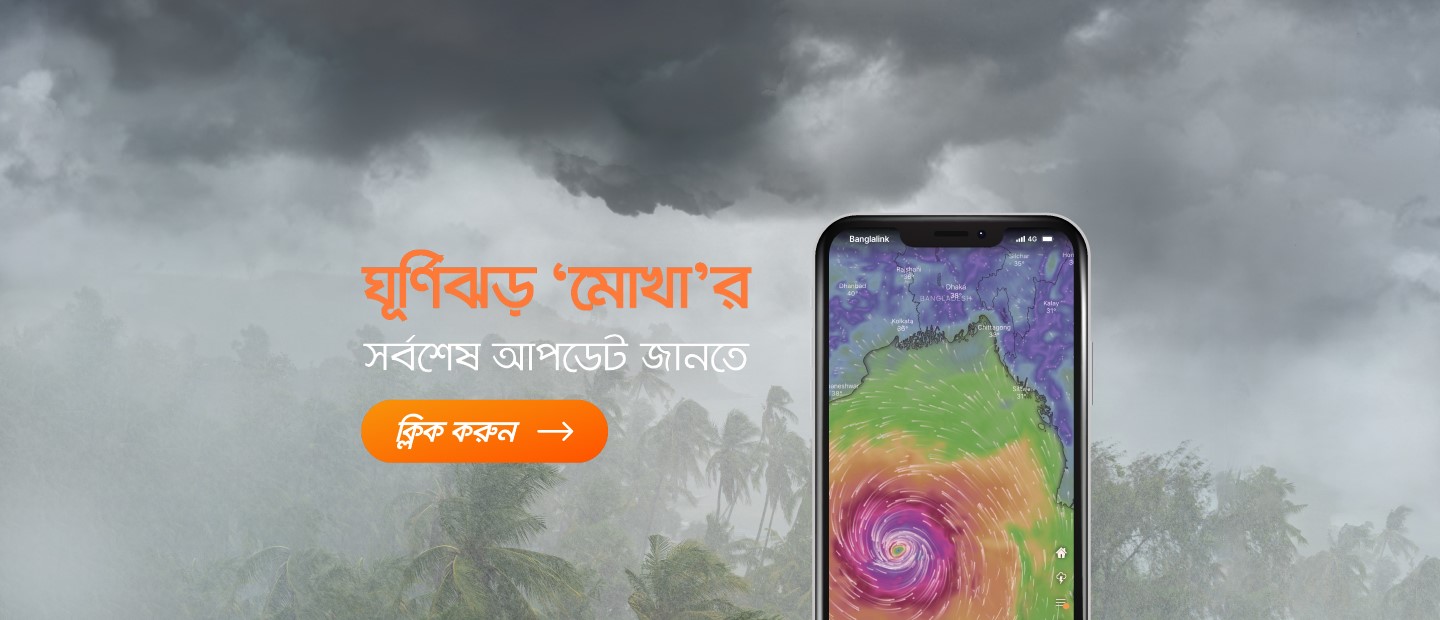Cyclone Warning With 4G
When Cyclone Mocha bore down on the coast of Bangladesh and Myanmar in mid-May it reminded many of the terrible events of 1991 when winds of 250 km/h caused seas to surge by six metres and led to the deaths of 138,000 people.
Fortunately, 30 years on, the death toll from the cyclone is much lower. And that is thanks to the lessons learnt, cooperation of the state authorities and companies, and to the evolution of technology.
It is often said that communications are vital. And in case of natural disasters, we can see the extent to which technologies can save lives. Where the risks by previous cyclones had previously been hard to communicate, the recently expanded 4G networks in the country enabled alerts and advice to be provided, helping authorities to evacuate 750,000 people away from the epicenter.
Determined to protect the country’s population, mobile operators worked with the Government of Bangladesh to develop an early warning system for people trapped in the path of the Cyclone Mocha.
In the case of Banglalink, the operator was able to provide real-time updates and warnings from the Bangladesh Government’s meteorologists that gave several days warning of where and when Cyclone Mocha would hit. The information was communicated through the Banglalink app for those with smartphones (approaching half of the population of Bangladesh), on Banglalink social channels and by SMS for those with standard phones.

Banglalink worked with the Government of Bangladesh to provide early warnings
This meant that where before there had been limited advance warning, for Cyclone Mocha there were multiple alerts issued to enable people to prepare provisions and secure their family and property ahead of the storm hitting. The early warning also provided time for those who needed to escape from the path of the cyclone, and according to the BBC over 750,000 people were successfully evacuated.
Since 1998, Bangladesh has seen seven or eight cyclones, but thankfully not many people have died thanks to the provision of cyclone shelters by the government and the means to alert people. Where previously the alerts about an impending cyclone were limited to SMS messages sent to the entire subscriber base, the advent of 4g in Bangladesh after 2018 meant that Banglalink and other operators could send much more detailed information including graphics and videos through the Banglalink app.
What people outside of disasters often don’t appreciate, but those affected know only too well, is that disasters are not a single hit, but a prolonged series of everchanging events that people must adapt to and take into account. Modern technologies allowed people to keep track of the real-live development and watch as Mocha changed course on the smartphones via apps like the Banglalink MyBL app , while Banglalink also provided specific information to people living in the areas that were about to be hit.
There was also an important job and duty for the mobile operators in making sure that their networks continue to operate and organise their own logistics for the worst-case scenario; generators needed to be stockpiled at critical locations within the cyclone trajectory as interruption to power supplies posed the biggest risk to the functioning of the network.
As Mocha hit land with 210 km/h winds near the city of Chittagong, the population was prepared and the Banglalink network proved resilient; despite 126 towers being knocked out by the storm, 80 were restored that day using backup generators and the rest were all were back online a day later.

MyBL provided advice and emergency contact information
Another major humanitarian concern as Mocha hit was the refugee camp at Cox’s Bazaar – the world’s largest and home to 919,000 highly vulnerable Rohingya refugees. This area was very close to where cyclone Mocha made landfall and operators had taken special precautions to ensure that the masts covering Cox’s Bazaar remained operational, as communication is as essential as food, water and shelter for refugees.
The advent of 4G has improved lives the world over, but in developing and disaster-prone countries like Bangladesh it is literally a lifeline. Few technologies and medical breakthroughs have truly transformed the world, but 4G ranks in the pantheon of innovations that has benefitted mankind through its ability to bring digital connectivity to all. For the people of Bangladesh, and especially those refugees in Cox’s Bazaar, 4G provided essential forewarning of Cyclone Mocha.
The early alert systems undoubtedly help save lives at the time of the disaster, but the destruction to houses, farms and livestock must not be forgotten. These always hit the poorest hardest, who have little means to rebuild their lives. The least telecoms companies can do is unite and cooperate with authorities on making essential communications and services affordable to the majority of people.
